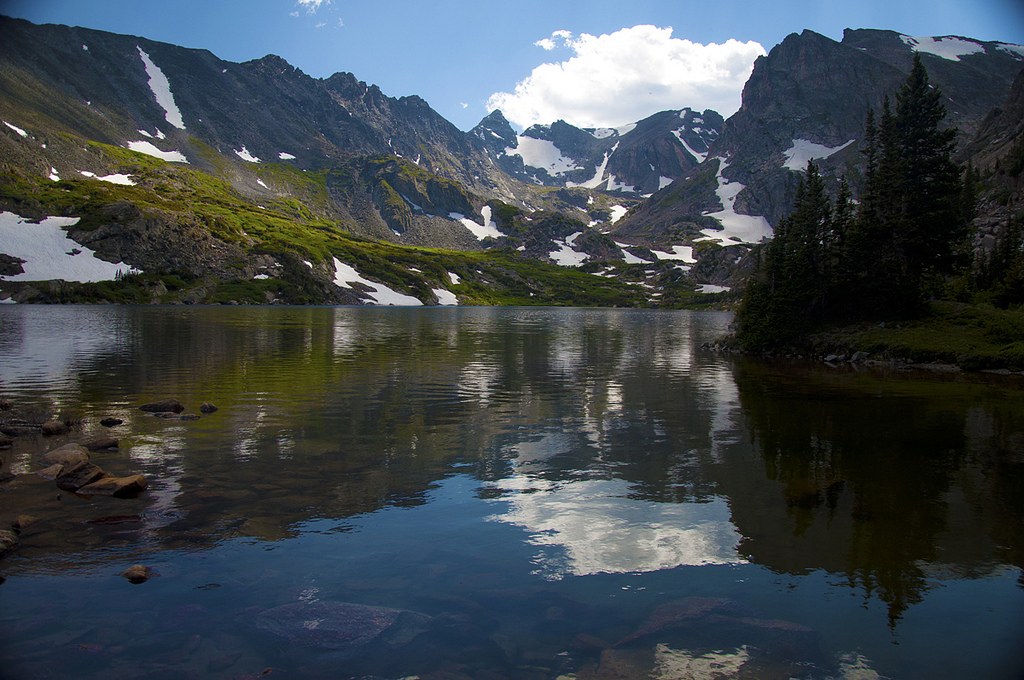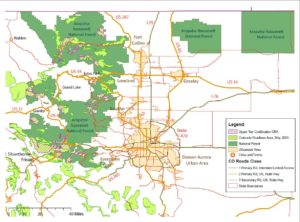
I’d passed the sign hundreds of times before. But as I drove the Peak to Peak Highway today and saw the familiar brown sign with white letters etched into it, I took the time to think about it.
Arapaho and Roosevelt National Forest
Much of the land that surrounds Nederland is U.S. Forest land named in a very significant way. Teddy Roosevelt, our 26th President, became well known for his efforts towards conservation. Whether it was creating national monuments or national forests, the mark he left on our public lands is enduring. During his presidency, Roosevelt set aside a total of 230 million acres of public lands for protection. In 1908, Roosevelt created the Arapaho National Forest as part of his efforts to establish the U.S. Forest Service.
The name he chose is fitting as it honors our Native Americans who were first known to inhabit these lands well before European settlers came. As a Park Ranger with the National Park Service, I have long been fascinated with American Indian history — their spirituality, their philosophy, their people. I’ve been fortunate to learn a great deal, whether it be examining the first encounters between Native Americans and the pilgrims at Cape Cod, or gazing upon pictographs and petroglyphs from the Fremont Indians at Capitol Reef. I’ve always identified with their ideology of feeling one with the land — that people don’t own the land, we honor the land, and we are all part of the web of life.
Working at Rocky Mountain National Park, I continued my curiosity by learning about the Ute and the Arapaho. They were the first tribes to inhabit what we now know as the Front Range, making their winter homes on the plains. But as the elk would make their way up into the alpine tundra during the hot summer months, the Ute and the Arapaho would follow them, hunting them to provide food, shelter, and clothing for their people.
One of the great ironies of Rocky Mountain National Park, is that after the park was created, and the Superintendent sought to build a road crossing the crest, they built both Fall River Road and Trail Ridge Road following the old Indian Trails the Ute and the Arapaho had created while hunting game. Fall River Road followed loosely the path of the Dog Trail created by the Arapaho.
Twenty-four years after Roosevelt honored our Native American legacy by creating Arapaho National Forest, he would be honored himself for his conservation legacy. Colorado National Forest, created in 1910, adjacent to the Arapaho National Forest, would be renamed Roosevelt National Forest in 1932. 
The Arapaho and Roosevelt National Forests today encompass 1.5 million acres extending from the Wyoming border all the way south of I-70. It includes at least four 14,000-foot peaks and sprawls across the Continental Divide. Glacial lakes, glaciers, numerous soaring peaks and cirques comprise this magnificent national forest. The scenery included in this vast public land is some of the most stunning in all of Colorado. And I am the lucky one who lives right smack in the middle of it, where I can literally walk out my door and down the road to explore its trails and creeks as part of my personal playground.
What better way to honor a one of our greatest presidents and our native people’s legacy.

